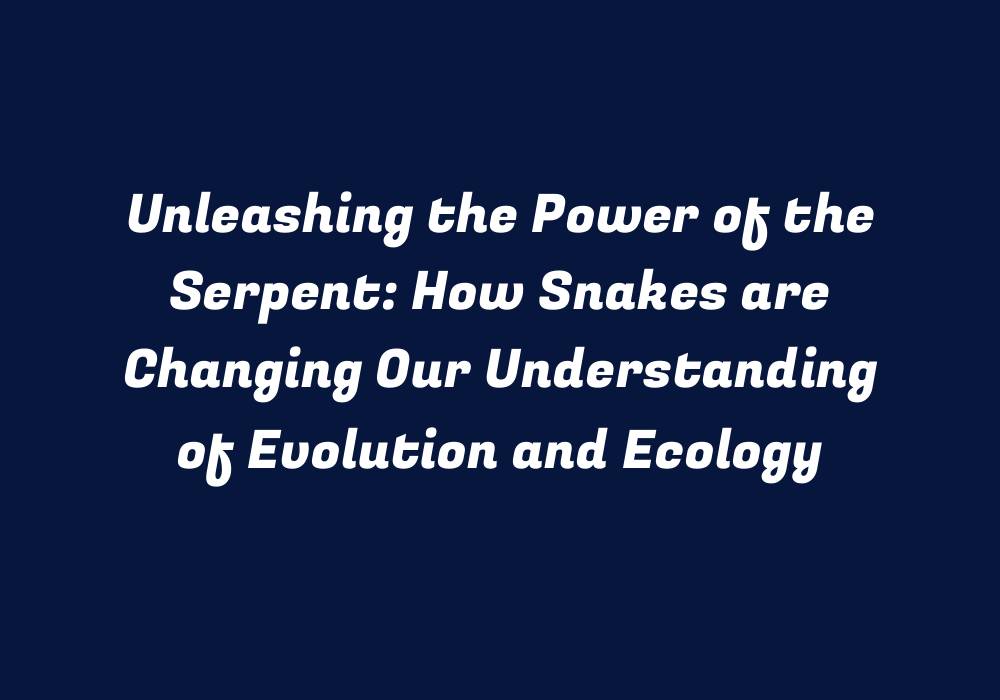Introduction
Snakes have fascinated humans for millennia, with their unique physiology, mystique, and adaptability capturing our imagination. While many people consider them to be merely slithering reptiles, the truth is far more intriguing. Snakes are not just creatures of folklore; they play a vital role in shaping both evolution and ecology. As we delve into their world, we discover that these often-overlooked serpents possess the power to transform our understanding of life on Earth.
Snakes in Evolution
Snakes have existed for millions of years, and their evolutionary history reflects a fascinating interplay between adaptation and survival. For instance, many modern snake species evolved from ancient lizard ancestors, which gradually shed their limbs to improve movement and reduce energy expenditure. This remarkable transformation enabled them to thrive in diverse environments, from watery ecosystems to harsh deserts.
By adapting to different habitats, snakes have contributed significantly to the ongoing evolution of life on Earth. Their unique morphology has allowed for increased specialization among various groups, leading to a remarkable diversity of species and behaviors that continue to shape our planet’s ecosystems. These adaptations demonstrate how even the seemingly small changes in physical structure can have significant implications for larger-scale ecological systems.
Snakes and Food Webs
Snakes have a tremendous impact on their environments due to their role as predators. By feeding on various prey, they help maintain the balance within food webs by controlling populations of insects, small mammals, amphibians, and even other snakes. Their diverse diets have contributed to the development of complex food webs that sustain a rich array of species and ecosystems.
One example of a snake’s role in shaping an ecosystem can be observed in the African savannas. Here, the presence of pythons is crucial for maintaining the health of this unique ecological system. By preying on rodents that would otherwise damage crops, they play an essential part in human-wildlife interactions and agriculture. Furthermore, snakes’ roles as predators can be seen in various ecosystems across the globe, from rainforests to deserts.
Ecological Impacts of Snake Populations
The complex relationship between snakes and other species within their environment often results in unpredictable and sometimes unexpected consequences. For instance, when a certain snake population is eliminated or experiences a decline due to human activities, the ecological balance can be disrupted. This leads to a domino effect, wherein a single change can result in cascading impacts on other organisms within the ecosystem.
As an example, consider the role of snakes as prey for larger predators such as birds of prey and mammals like foxes and wild cats. If snake populations decrease due to habitat loss or human interference, these predators may suffer from a decrease in their primary food sources. In turn, this could lead to increased competition for resources among other animal species within the ecosystem, which may further exacerbate ecological imbalances.
Conclusion
The fascinating world of snakes has much to teach us about evolution and ecology. By exploring their unique role in both shaping our planet’s biological diversity and functioning as crucial components within complex food webs, we can gain a deeper understanding of the intricate interdependencies that underpin life on Earth. As our awareness grows, so does our appreciation for these often misunderstood creatures and the vital role they play in maintaining balance within their environments.
In the face of rapid environmental change and human impacts, it is essential to recognize the significance of snakes and other species in sustaining our planet’s delicate ecosystems. By understanding how these serpentine marvels of nature can transform our perception of evolution and ecology, we can better appreciate the importance of preserving their diverse habitats and ensuring a thriving, interconnected world.
